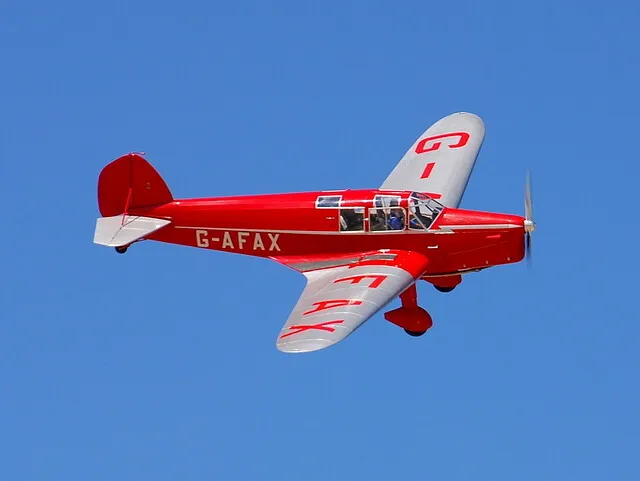Eagle (Total: 1, Canadian: 1, Group 0)
British Klemm Aeroplane Company Eagle

The British Klemm Aeroplane Company developed the B.K.1 Eagle, a three-seat light aircraft as a follow-up to the British Klemm Swallow, its licensed copy of the Klemm L.25. While similar to the Klemm Kl 32, it was an entirely independent design by G. Handasyde, the chief designer of British Klemm, first flying in early 1934.[1] The Eagle was a low-wing wooden monoplane with a retractable undercarriage. It had an enclosed cabin for the pilot and two passengers. Six of this initial version of the Eagle were built. As was the case with the Swallow, a revised version was introduced in 1935 when British Klemm was renamed the British Aircraft Manufacturing Co. This version, the B.A. Eagle II had a revised rudder and a deepened rear fuselage. A total of 37 Eagle IIs were built, including a single example fitted with a fixed undercarriage.
Eagles were mainly sold to private owners, with a few also being used by flying clubs or as executive transports. In India, the Nawab of Sachin operated an Eagle as his personal aircraft. Eagles were also used for air racing, with several being entered into the King's Cup Races between 1935 and 1937. Single examples were also entered into the MacRobertson Air Race of 1934 between Britain and Australia and the 1936 Schlesinger Race between England and South Africa. Neither aircraft completed the races
At the outbreak of the Second World War, seven Eagles were pressed into RAF service in the UK, with two in Australia and one in Kenya, but the undercarriages proved vulnerable in RAF service, with most airframes being written off due to undercarriage failure.Two aircraft survived the war to be flown by civil owners in Australia.Wikipedia
Eagle Mk. ll serial DP847
s/n DP847
British Klemm Aeroplane Company
DP 847
Known Units:
At the outbreak of the Second World War, seven Eagles were pressed into RAF service in the UK, with two in Australia and one in Kenya,but the undercarriages proved vulnerable in RAF service, with most airframes being written off due to undercarriage failure.[Two aircraft survived the war to be flown by civil owners in Australia.last update: 2025-February-05
 Wikipedia BA Eagle ll
Wikipedia BA Eagle ll